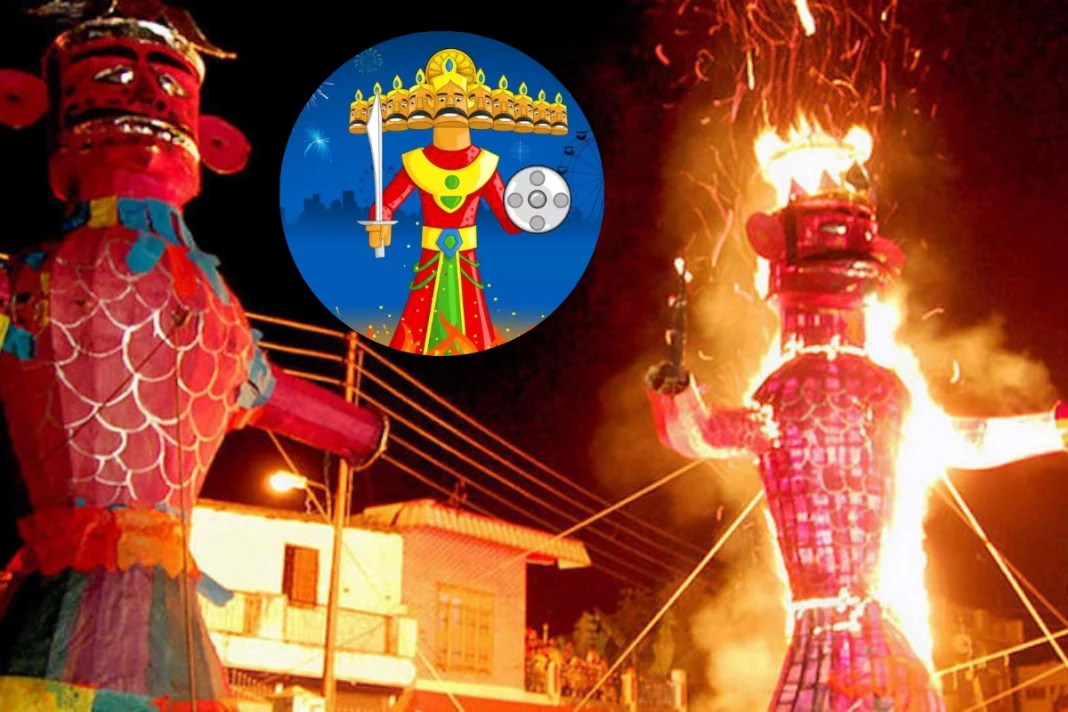Dussehra 2022: Dussehra, also known as Vijaydashmi, is a prominent Hindu holiday that commemorates the conclusion of Navratri and is widely celebrated in India, Bangladesh and Nepal. Dussehra, which commemorates Lord Rama’s victory over the ten-headed demon-king Ravana, is a day that symbolises the triumph of good over evil. Dussehra also commemorates Goddess Durga’s victory over the monster Mahishasura.
Dussehra is derived from the Sanskrit words ‘dasha’ (Ravana had 10 heads) and ‘hara’ (festival) (Lord Rama defeats Ravana). Dussehra is also celebrated to welcome in the festival of lights, Diwali, and to commemorate Lord Rama’s return home after a 14-year exile.
Also Read: Bharat Jodo Yatra: Rahul Gandhi Has Now Garnered Solidarity From Hollywood Star John Cusak
The holiday is celebrated differently in different parts of India. Northern India (and some parts of the south). Dussehra is linked with Lord Rama’s great fight with Lanka’s ruler Ravana. Massive effigies of Ravana, as well as those of his brothers Kumbakaran and Meghanada, are burned as part of the Dussehra celebrations. Durga Puja celebrations in India’s eastern and western areas also overlap with Dussehra. Vijaydashmi commemorates Goddess Durga’s return to the sky.
Important dates and timings of Dussehra 2022:
The following are the Dussehra puja timings and tithi:
Dashami Tithi begins on October 4, 2022 at 2:20 p.m.
Dashami Tithi concludes on October 5, 2022, at 12 p.m.
Shravan Nakshatra begins on October 4, 2022, at 10:51 p.m.
Shravan Nakshatra will conclude on October 5, 2022, at 9:15 p.m.
On October 5, 2022, from 02:13 pm to 2:54 pm, Vijay Muhurta will be active.
Amrit Kaal will start from 11:33 a.m. until 01:02 p.m. on October 5, 2022.
On October 5, 2022, from 11:51 a.m. until 12:38 a.m., there will be a muhurta.
How do people celebrate Dussehra?
During the Dussehra celebration, rituals and prayers are presented to Lord Ram, Bharat, Lakshman, and Shatrughan. The burning of lamps and incense sticks, as well as numerous food offerings to Lord Ram such as banana, jaggery, radish, and rice, are all part of the rites. It is also a practise for devotees to swap leaves from the Shami tree. There are also fairs, parades, and outdoor festival gatherings when effigies of the demon-king Ravana are burned to symbolise the victory of good over evil.
Gujaratis dress brightly, dance the Garba and Dandiya (renowned Indian traditional dances), and worship Goddess Durga. In West Bengal, followers celebrate the anniversary with Durga Puja (Bijoya Dashmi) to commemorate Goddess Durga’s victory over the monster Mahishasura.
Also Read: Deepti Sharma’s clever run-out seals India’s series win, R. Ashwin, Stuart Broad lead reactions
People in Mysore worship Goddess Chamundeswari, another aspect of Goddess Durga; here, you may see the brilliantly lighted Mysore palace and a parade that traverses around the city. The state administration has designated Dussehra in Himachal Pradesh’s Kullu district as a “international festival.”
Even if the rituals and folk stories vary per state, the essence of Dussehra remains consistent. In the end, good will always win over evil, and peace will always triumph after turmoil or disaster. Most Hindus feel that the Dussehra holiday is a fantastic time to launch a new business or initiative; they also pray for their success and well-being.
Keep watching our YouTube Channel ‘DNP INDIA’. Also, please subscribe and follow us on FACEBOOK, INSTAGRAM, and TWITTER


